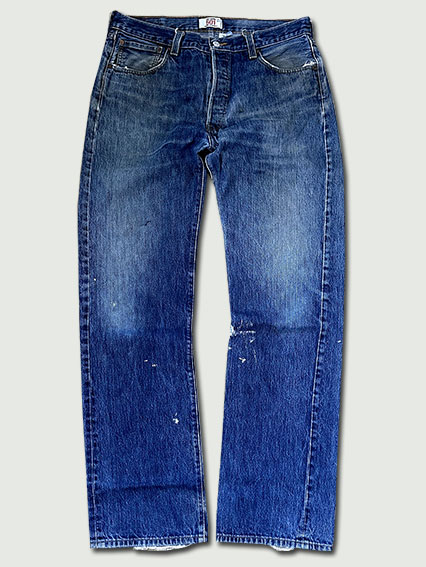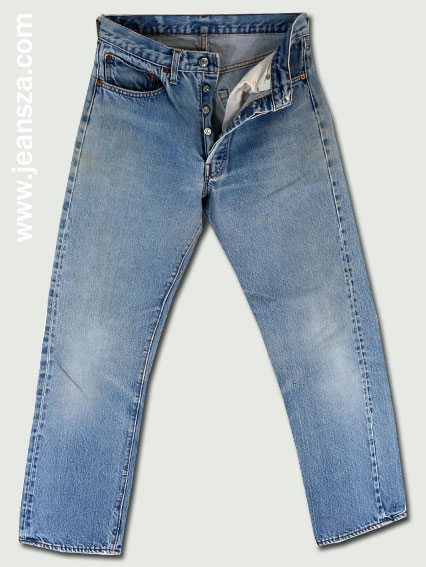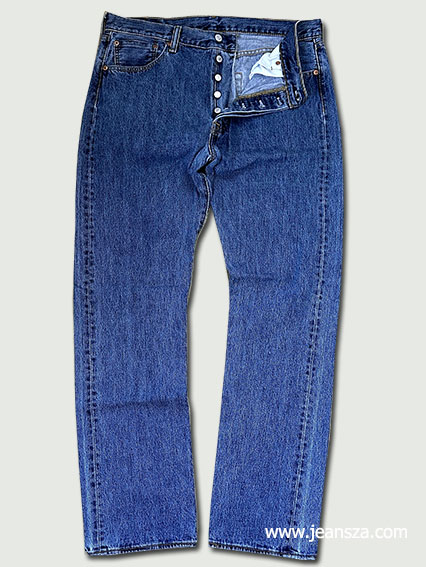How to Read Levi's Jeans Care Labels
Originally, Levi's 501 jeans did not have care labels attached to the inside like they do today. Instead, care and detail information was printed directly onto the inside of the pocket bag. This practice was last seen in 1972-1973. This means that 1973 was the first year Levi's began using care instruction labels, which collectors often refer to as "care tags." To better understand these details, let's look at a photo from 1974.
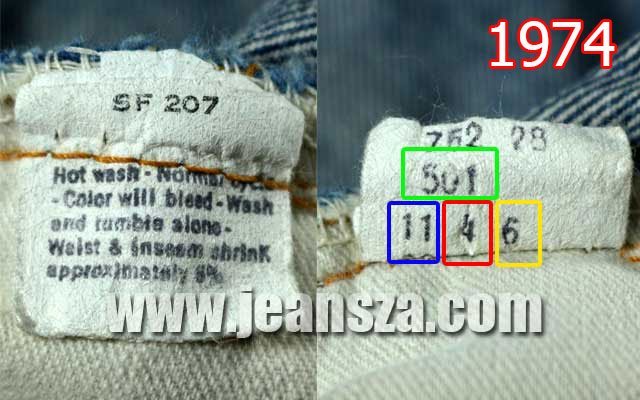
Decoding a Vintage Levi's 501 Care Tag
The image above shows the care tag from a pair of Levi's 501 jeans. These tags are packed with information about the jeans' production date and origin. Let's break down what each colored frame means.
Care Tag Details
-
Green Frame: This indicates the model number, Lot. 501, confirming they are Levi's 501 jeans.
-
Blue Frame: This number represents the production month, which in this case is November.
-
Red Frame: This number signifies the production year, which is 1974.
-
Yellow Frame: This is the factory code for the manufacturing location. This code should always match the number stamped on the back of the jeans' top button to confirm authenticity.
Additional Points for Authentication
In addition to the care tag, several other details on the jeans are crucial for authentication, including:
-
The red selvedge (red-line) seam.
-
The Red Tab with a lowercase "e" ("small e") on the back pocket.
-
The single-thread stitching on the inner back pocket.
These details, combined with the information from the care tag, provide a comprehensive way to verify the jeans' authenticity and history.
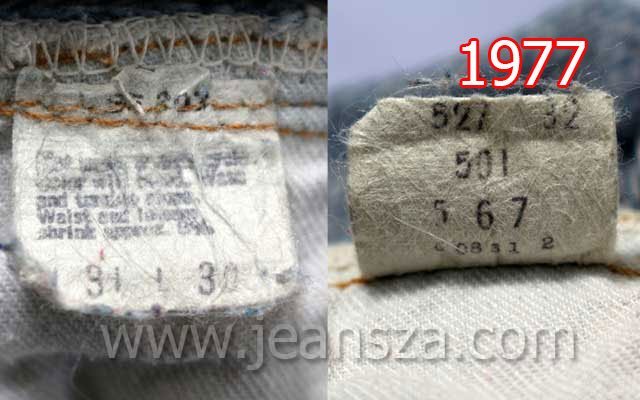
Reading Levi's Jeans Care Labels: The 1977 Example
The care label on a pair of 1977 Levi's jeans is similar to the 1974 label, but with a different layout. The production year, which is the number "7," is positioned at the back. This isn't unusual, as slight variations and occasional printing errors were common in the past.
On this care label, the number 501 is the lot number. The next group of numbers, 5 6 7, is interpreted as follows:
-
The number 5 represents the production month.
-
The number 7 represents the production year (1977).
-
The number 6 is the production location code and should match the number stamped on the back of the top button. This is a key detail for confirming authenticity.
When authenticating a vintage pair of Levi's, you must always cross-reference the numbers on the care tag with the numbers stamped on the button.
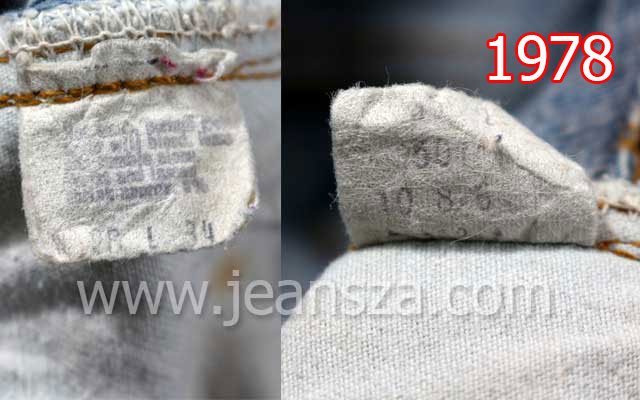
Based on the image above, the care label on these Levi's 501 jeans indicates a production month of October (10), a production year of 1978, and a factory code of 6, which corresponds to a manufacturing location in the United States.

"Based on the care label in the picture, these Levi's 501 jeans were produced in May 1979. The button number 6 confirms they were made in a factory in the United States. The jeans have a waist size of W34 and an inseam length of L31."
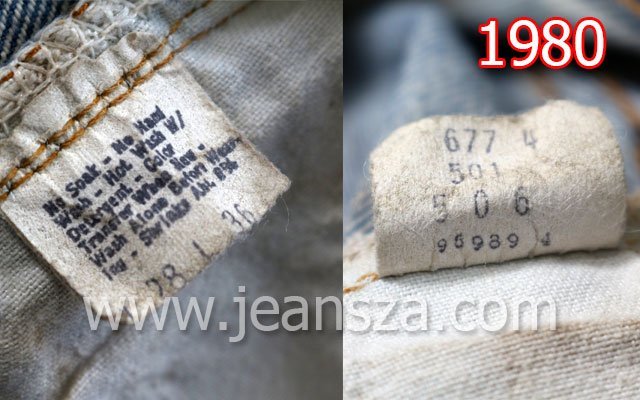
From the image, the care label on these Levi's 501 jeans indicates they were produced in May 1980. The button number, 6, confirms they were made in a U.S. factory.
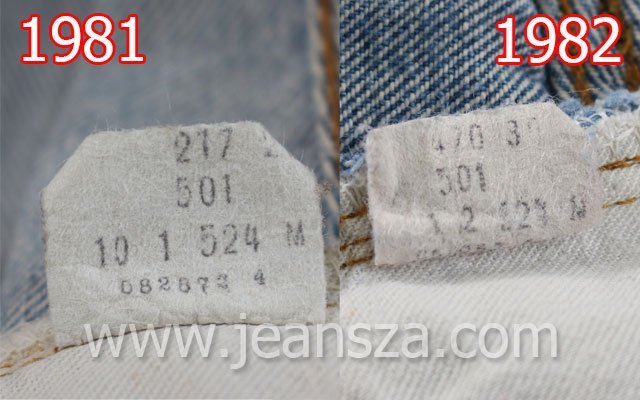
Reading Levi's 501 Care Labels from 1981 and 1982
From the provided care labels, here is the production information for two pairs of Levi's 501 jeans:
-
Left Side (White Label): Produced in October 1981, with button number 524, indicating it was manufactured in the USA.
-
Right Side (White Label): Produced in January 1982, with button number 524, also manufactured in the USA.

Reading Levi's 501 Care Labels from 1983
The picture shows the care label of a pair of Levi's 501 jeans produced in May 1983. The button number, 524, indicates that the jeans were manufactured in the USA.
Labels like this one are small and are sewn into the left seam of the jeans, near the pocket. This specific care label design was used until 1983 and was replaced by a new pattern in 1984.
Authenticating Vintage Levi's Care Labels (1973-1983)
Upon close inspection, you'll find details on these care labels that are difficult to replicate.
The paper texture of the care label has small fibers, similar to rice paper, which gives it a unique blend of strength and softness. This texture is designed to not irritate the skin when the jeans are worn. The distinct feel of this type of care label is a key detail for authenticating vintage Levi's 501 jeans from the 1973-1983 era, as their high value makes them a target for counterfeiters.
I have enlarged the image for you to see the unique fibrous texture of this style of Levi's care label. Remember this texture; you won't find it on fakes.

The picture above shows the unique paper texture of a Levi's 501 care label from the 1973-1983 era. You can clearly see the white fibers in the paper's surface, a detail that is nearly impossible to counterfeit. This distinct fibrous texture is a key feature of the care labels found on Levi's 501 Red Line "small e" jeans produced during this specific period.


